Pressure Washing Niwot
Find Driveway Cleaning in Niwot
Receive 3 FREE Pressure Washing quotes for your project today! Compare profiles, reviews, accreditations, portfolio, etc... and choose the best service.

Aqua Wash
4.960 reviews35547 Devon Dr., Slidell, 70460, USAqua Wash is a professional pressure washing and soft washing company serving the New Orleans and Northshore areas. We offer a comprehensive lineup of high-quality exterior cleaning services designed to fit just about any pressure washing need you might have around your home. With our high-quality roof washing, soft washing, and house washing services, there's no surface around your home that our team of skilled professionals can't help you return to its original, immaculate state. We understand that your home is likely one of the most significant investments you'll ever make, and as such, you want to do everything in your power to protect your investment and keep it looking great for you and your family. When it comes to maintaining the beauty of your New Orleans home, pressure washing and soft washing are two of the most useful tools you can have in your arsenal, and here at Aqua Wash, we are the skilled pros you can trust to help you get the job done right.
- Services
- Why Us?
- Testimonials
- Gallery
Get Quote
Colorado Pressure Washing Services, LLC
123 Main St, Suite 100, Denver, 80202, USAt Colorado Pressure Washing Services LLC, we understand the value of a pristine and impressive exterior. Whether it's a sprawling mansion, a historic residence, or a luxurious villa, our team, equipped with the best in the industry from Landa, is dedicated to making your property radiate unparalleled elegance and charm.
- Services
- Why Us?
- Accreditations
- Our Team
- Testimonials
- Gallery
Get Quote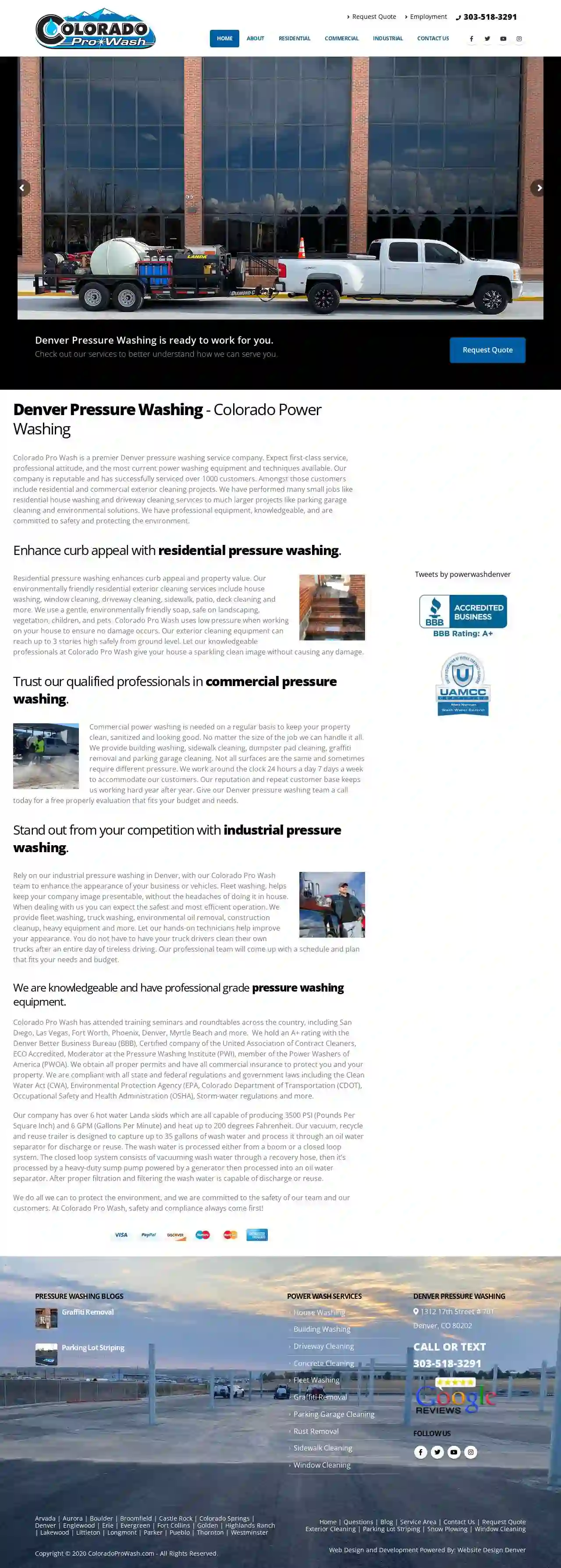
Colorado Pro Wash
Denver, USColorado Pro Wash is a professional pressure washing company serving the Denver area and Southern Colorado. We offer a wide range of services including residential and commercial pressure washing, concrete cleaning, driveway cleaning, rust removal, and more. Our team is dedicated to providing exceptional service and ensuring customer satisfaction. With years of experience and a commitment to quality, we are the go-to choice for pressure washing in the Denver area.
- Services
- Why Us?
- Accreditations
- Our Team
- Testimonials
- Gallery
Get Quote- Wh
Who Dat Pressure Washing
57 reviews1000 N Claiborne Ave, Suite 100, New Orleans, 70123, USWho Dat Pressure Washing is your one-stop shop for all your pressure washing needs. We offer a wide range of services, including residential and commercial pressure washing, roof cleaning, and more. We are a fully insured and licensed company with years of experience in the industry. Our team of professionals is dedicated to providing you with the highest quality service at competitive prices.
- Services
- Why Us?
- Gallery
Get Quote 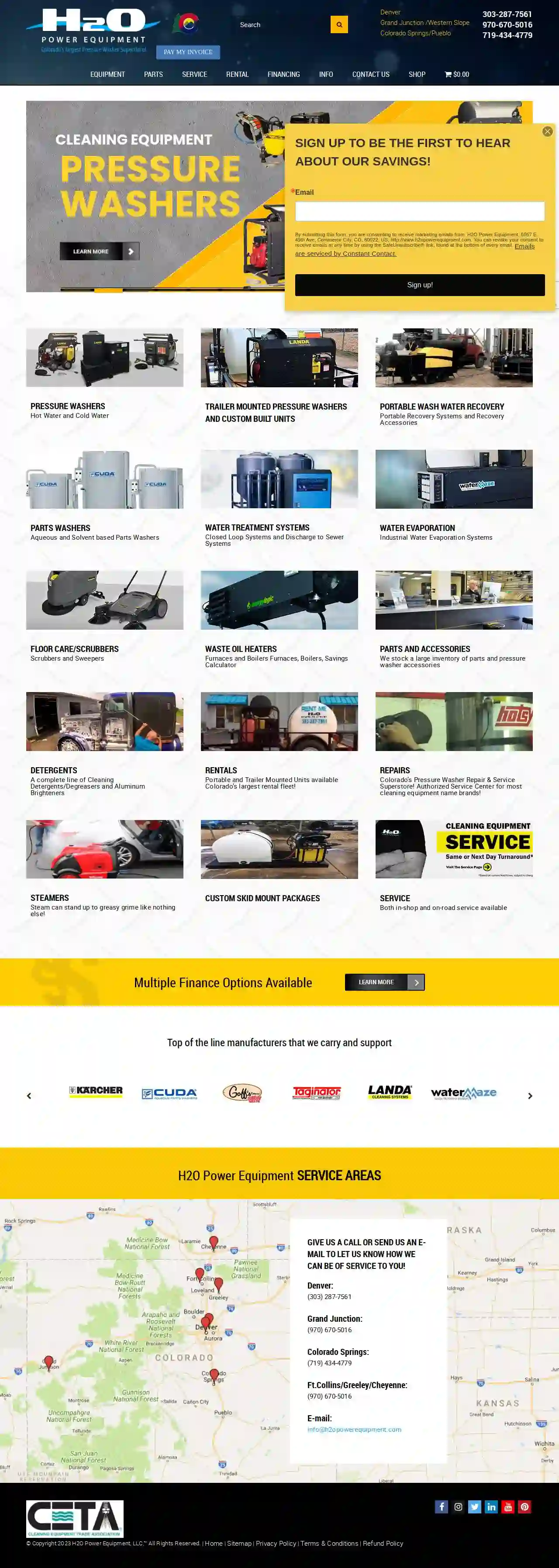
H2O Power Equipment
4.7201 reviewsDenver, 14011, USH2O Power Equipment is your one-stop shop for all your pressure washing needs. We offer a wide variety of hot water and cold water pressure washers, as well as trailers and custom installs. We also carry a full line of parts and accessories, including detergents, burners, coils, couplers, fittings, filters, electrical components, engines, motors, pulleys, guns, wands, lances, hoses, reels, nozzles, pumps, pump kits, unloaders, injectors, valves, and gauges. We offer both in-shop and on-road service, and we are an authorized service center for most cleaning equipment name brands. We also offer rentals, financing, and combatting invasive species solutions.
- Services
- Why Us?
- Gallery
Get Quote
Bayou Boys Soft Washing LLC
51 reviewsLafayette, LA, PO Box 51752, 70505, USBayou Boys Soft Washing is a local business offering professional soft washing services in the Acadiana area. They provide a variety of services including pressure washing, soft washing, gutter maintenance, sidewalk maintenance cleaning, and more. Their team is experienced, insured, and reliable, and they offer contracts for their services. They cater to both residential and commercial properties and are ready to tackle any cleaning job.
- Services
- Why Us?
- Our Team
- Testimonials
- Gallery
Get Quote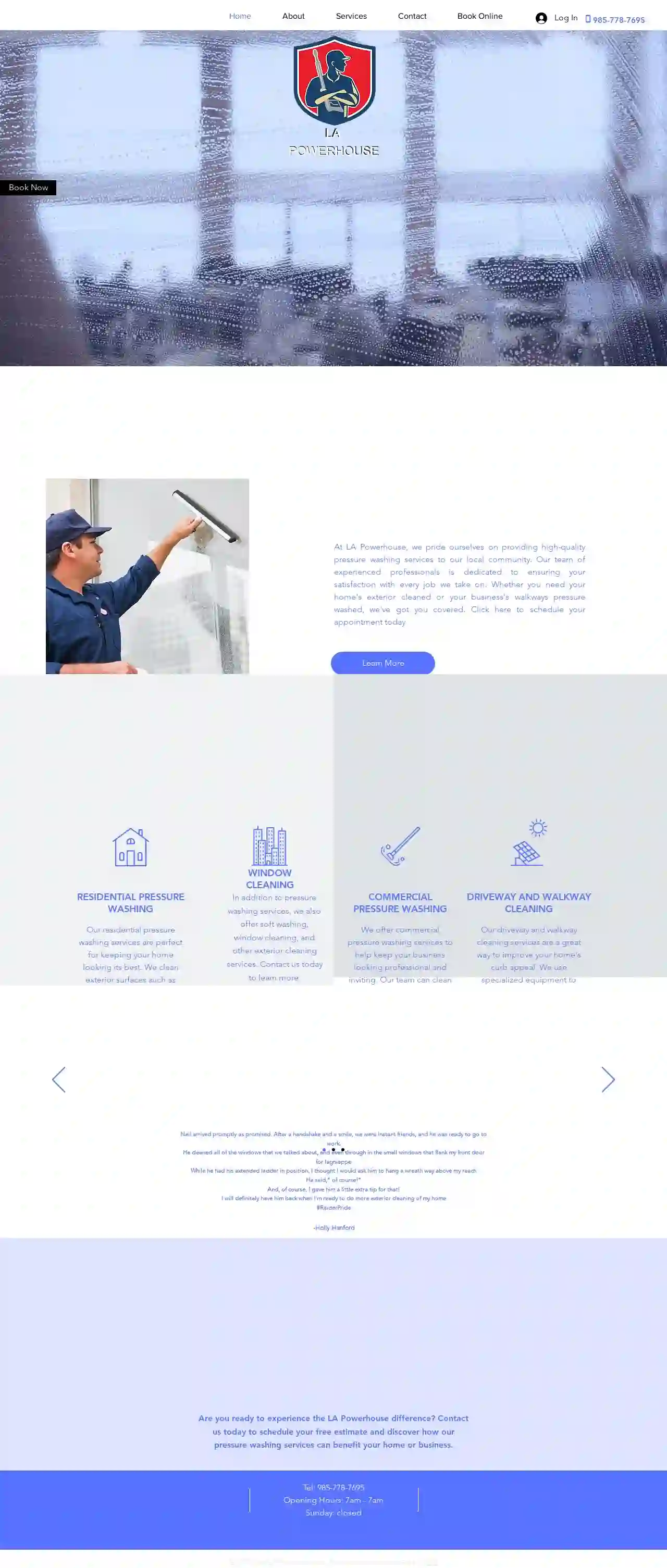
LA Powerhouse Pressure Washing LLC
516 reviewsLafayette, USAt LA Powerhouse, we pride ourselves on providing high-quality pressure washing services to our local community. Our team of experienced professionals is dedicated to ensuring your satisfaction with every job we take on. Whether you need your home's exterior cleaned or your business's walkways pressure washed, we've got you covered. Our residential pressure washing services are perfect for keeping your home looking its best. We clean exterior surfaces such as siding, decks, and patios to remove dirt, grime, and other buildup that can cause damage over time. We offer commercial pressure washing services to help keep your business looking professional and inviting. Our team can clean exterior surfaces such as sidewalks, entryways, and parking lots to remove dirt, gum, and other unsightly buildup. Our driveway and walkway cleaning services are a great way to improve your home's curb appeal. We use specialized equipment to remove dirt, oil, and other stains from your concrete and paver surfaces. In addition to pressure washing services, we also offer soft washing, window cleaning, and other exterior cleaning services.
- Services
- Why Us?
- Testimonials
- Gallery
Get Quote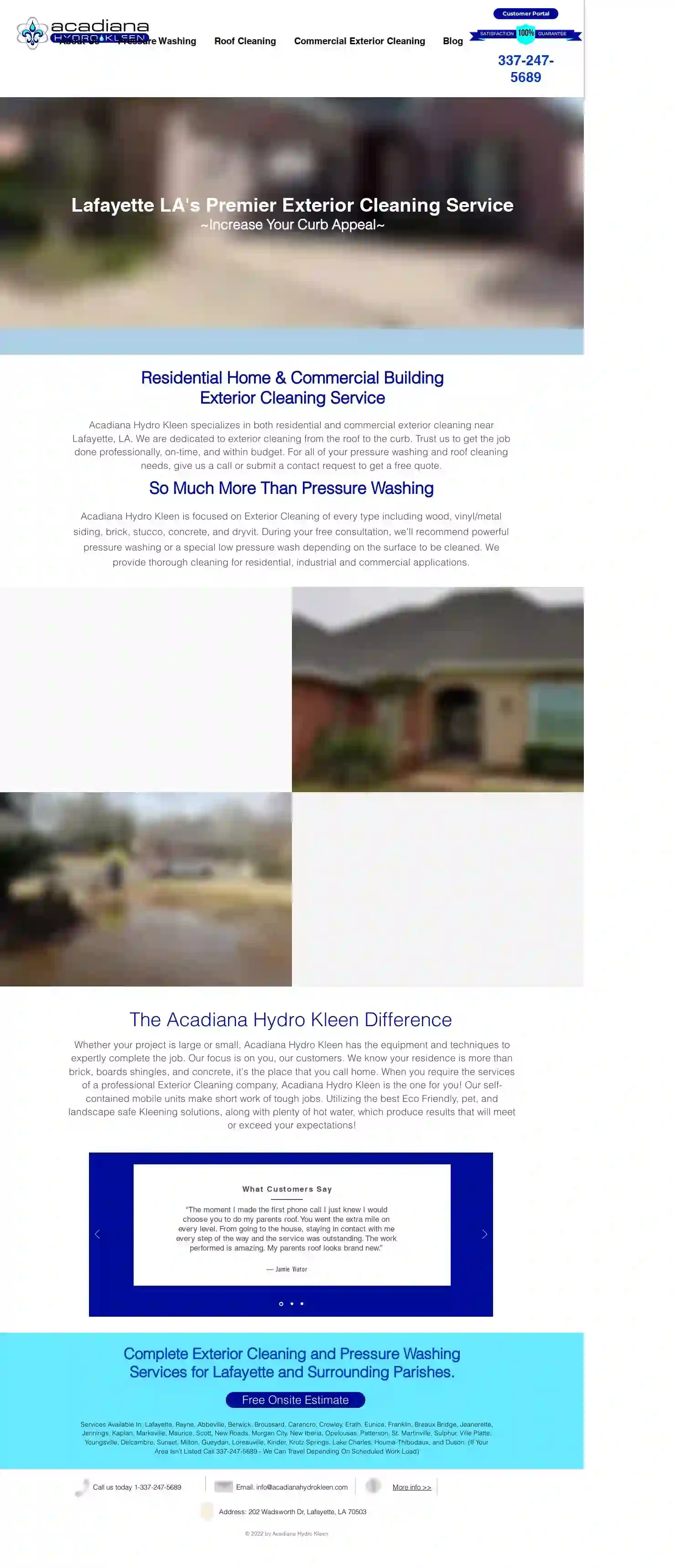
Pressure Washing Lafayette
202 Wadsworth Dr, Lafayette, 70503, USAcadiana Hydro Kleen is Lafayette, LA's premier exterior cleaning service, dedicated to providing professional pressure washing and roof cleaning solutions for both residential and commercial properties. We specialize in a wide range of exterior cleaning services, including wood, vinyl/metal siding, brick, stucco, concrete, and dryvit. Our team utilizes powerful pressure washing or specialized low-pressure washing techniques depending on the surface, ensuring thorough and effective cleaning for all applications. We pride ourselves on our commitment to customer satisfaction, offering free onsite estimates and utilizing eco-friendly, pet, and landscape-safe cleaning solutions. Whether your project is large or small, Acadiana Hydro Kleen has the expertise and equipment to deliver exceptional results.
- Services
- Why Us?
- Testimonials
- Gallery
Get Quote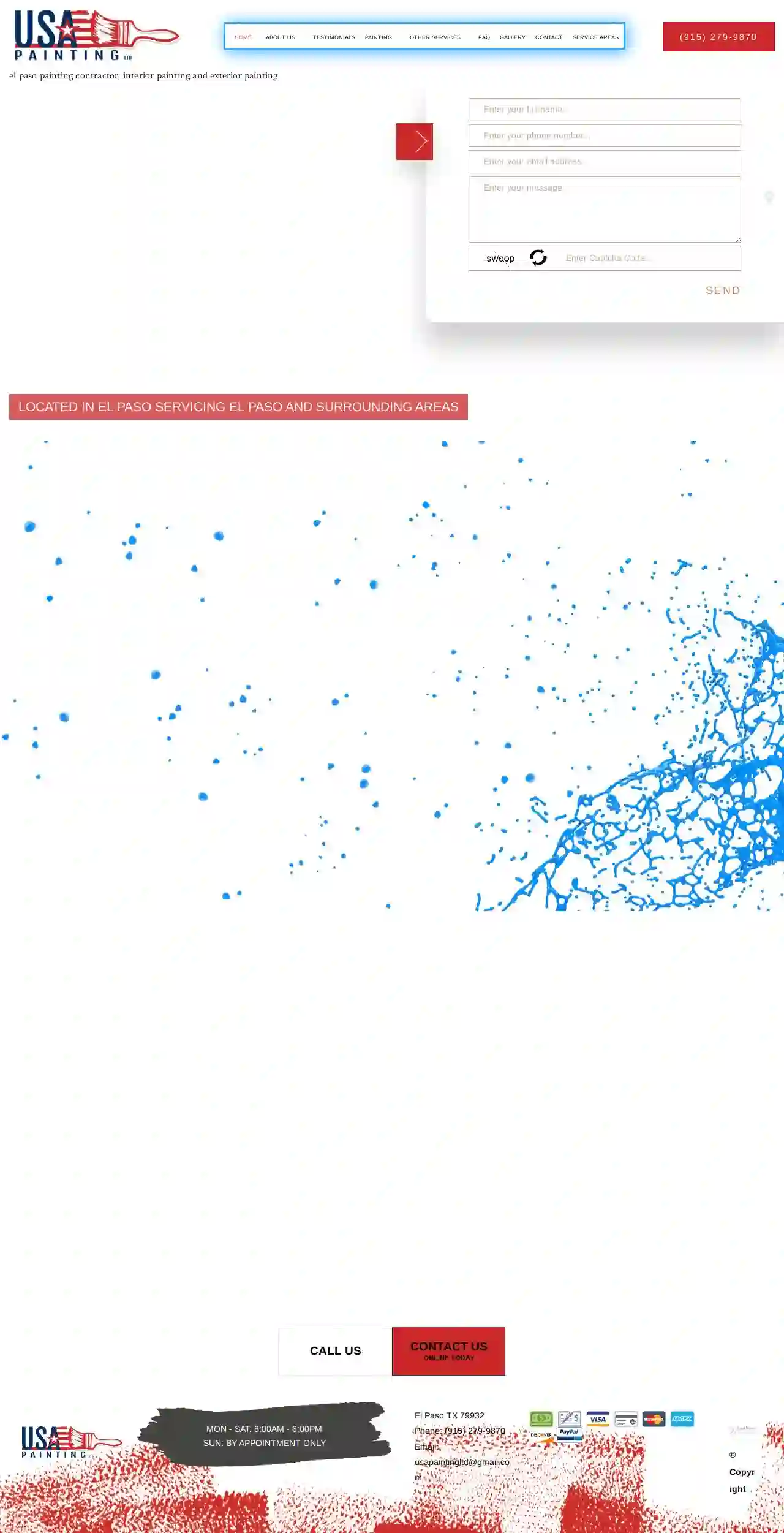
USA Painting Ltd.
El Paso, 79932, USUSA Painting Ltd. is a team of dedicated local painters serving El Paso and surrounding areas. We are committed to providing the best painting services, treating every building as if it were our own. We believe in building lasting relationships with our customers, treating them like neighbors and ensuring their satisfaction. Our team is fully trained and experienced, using high-quality tools and materials to deliver exceptional results. We offer a wide range of services, from commercial to residential, interior to exterior, and everything in between. Whether you need a simple touch-up or a complete makeover, USA Painting Ltd. is here to help you achieve your vision.
- Services
- Why Us?
- Testimonials
- Gallery
Get Quote
Pressure Wash Dat, LLC
541 reviews4800 Veterans Memorial Blvd, Suite 100, Metairie, 70002, USPressure Wash Dat, LLC is a locally owned and operated business serving the Metairie, LA area since 2018. Our team of experts boasts over 20 years of combined experience in providing high-quality pressure washing and soft washing services for both residential and commercial clients. We utilize top-of-the-line equipment to ensure customer satisfaction and deliver exceptional results. Our commitment to excellence extends beyond just cleaning; we believe in protecting your investment by preventing damage and maintaining the beauty of your property. We pride ourselves on our punctuality, clear communication, and meticulous attention to detail. We treat every property with respect and perform thorough quality control checks to guarantee a flawless finish. Contact us today for a free estimate and let us help you achieve a spotless and inviting exterior for your home or business.
- Services
- Why Us?
- Our Team
- Testimonials
- Gallery
Get Quote
Over 60,241+ Cleaning Businesses onboarded
Our janitorial contractors operate in Niwot & beyond!
CleaningMatch has curated and vetted Top Janitorial Contractors arround Niwot. Find a top & reliable pro today.
Frequently Asked Questions About Pressure Washing
- 0-degree Nozzle: Produces a highly concentrated, powerful jet of water for removing stubborn stains or stripping paint. Use with caution as it can damage surfaces easily.
- 15-degree Nozzle: A versatile nozzle for cleaning concrete, brick, and other hard surfaces. Provides a good balance of pressure and coverage.
- 25-degree Nozzle: A wider spray pattern for cleaning delicate surfaces like siding or fences.
- 40-degree Nozzle: A very wide spray pattern, ideal for rinsing or applying cleaning solutions.
- Soap Nozzle: A low-pressure nozzle designed specifically for applying cleaning solutions.
- Rotary Nozzle: Also known as a turbo nozzle, it produces a rotating, high-impact spray for tackling tough stains and grime.
- Driveways: Removes oil stains, tire marks, dirt, and grime, restoring the appearance of concrete, asphalt, or paver driveways.
- Decks and Patios: Cleans wood, composite, or concrete decks and patios, removing dirt, mildew, and algae, and preparing them for staining or sealing.
- Fences: Revitalizes wood, vinyl, or composite fences, removing dirt, grime, and weathering, and enhancing their appearance.
- Siding: Cleans vinyl, aluminum, brick, or wood siding, removing dirt, mold, mildew, and other contaminants, and restoring its original color.
- Roofs: Removes moss, algae, and other debris from roofs, extending their lifespan and improving their appearance. Soft washing is typically recommended for roof cleaning to prevent damage.
- Walkways and Sidewalks: Cleans concrete or brick walkways and sidewalks, removing dirt, grime, and stains, and improving safety by reducing slipperiness.
- Brick and Stone: Cleans brick and stone surfaces, removing dirt, mildew, and efflorescence, and restoring their natural beauty.
- Annually: Pressure washing your house at least once a year helps remove accumulated dirt, grime, and other contaminants, keeping it looking its best.
- Every 2-3 Years: If you live in an area with high humidity, heavy tree cover, or frequent exposure to pollutants, more frequent pressure washing may be necessary.
- When Visible Dirt and Grime Appear: Address visible dirt, stains, or mold growth promptly to prevent them from becoming more challenging to remove.
What are the different types of pressure washer nozzles?
Choose the appropriate nozzle based on the cleaning task and the type of surface being cleaned. Consult the pressure washer manual or a professional pressure washer for guidance.
What surfaces can be pressure washed?
It's important to note that different surfaces require different pressure levels and cleaning solutions. Always consult with a professional pressure washing company to determine the appropriate cleaning method for your specific needs.
How often should I pressure wash my house?
Regular pressure washing can maintain your home's exterior, extend the lifespan of your siding, and enhance its curb appeal.
What is the difference between pressure washing and soft washing?
Pressure washing uses high-pressure water spray to blast away dirt, grime, and other stubborn contaminants from hard surfaces. It's effective for cleaning driveways, decks, patios, fences, and siding.
Soft washing utilizes low-pressure water combined with specialized cleaning solutions to gently remove dirt, mold, mildew, and algae from delicate surfaces like roofs, siding, and painted surfaces. Soft washing is less abrasive than pressure washing, preventing damage to sensitive materials.
Choosing the appropriate cleaning method depends on the type of surface, its condition, and the desired cleaning outcome. Consult with a professional pressure washing company to determine the best approach for your specific needs.
What are the different types of pressure washer nozzles?
- 0-degree Nozzle: Produces a highly concentrated, powerful jet of water for removing stubborn stains or stripping paint. Use with caution as it can damage surfaces easily.
- 15-degree Nozzle: A versatile nozzle for cleaning concrete, brick, and other hard surfaces. Provides a good balance of pressure and coverage.
- 25-degree Nozzle: A wider spray pattern for cleaning delicate surfaces like siding or fences.
- 40-degree Nozzle: A very wide spray pattern, ideal for rinsing or applying cleaning solutions.
- Soap Nozzle: A low-pressure nozzle designed specifically for applying cleaning solutions.
- Rotary Nozzle: Also known as a turbo nozzle, it produces a rotating, high-impact spray for tackling tough stains and grime.
Choose the appropriate nozzle based on the cleaning task and the type of surface being cleaned. Consult the pressure washer manual or a professional pressure washer for guidance.
What surfaces can be pressure washed?
- Driveways: Removes oil stains, tire marks, dirt, and grime, restoring the appearance of concrete, asphalt, or paver driveways.
- Decks and Patios: Cleans wood, composite, or concrete decks and patios, removing dirt, mildew, and algae, and preparing them for staining or sealing.
- Fences: Revitalizes wood, vinyl, or composite fences, removing dirt, grime, and weathering, and enhancing their appearance.
- Siding: Cleans vinyl, aluminum, brick, or wood siding, removing dirt, mold, mildew, and other contaminants, and restoring its original color.
- Roofs: Removes moss, algae, and other debris from roofs, extending their lifespan and improving their appearance. Soft washing is typically recommended for roof cleaning to prevent damage.
- Walkways and Sidewalks: Cleans concrete or brick walkways and sidewalks, removing dirt, grime, and stains, and improving safety by reducing slipperiness.
- Brick and Stone: Cleans brick and stone surfaces, removing dirt, mildew, and efflorescence, and restoring their natural beauty.
It's important to note that different surfaces require different pressure levels and cleaning solutions. Always consult with a professional pressure washing company to determine the appropriate cleaning method for your specific needs.
How often should I pressure wash my house?
- Annually: Pressure washing your house at least once a year helps remove accumulated dirt, grime, and other contaminants, keeping it looking its best.
- Every 2-3 Years: If you live in an area with high humidity, heavy tree cover, or frequent exposure to pollutants, more frequent pressure washing may be necessary.
- When Visible Dirt and Grime Appear: Address visible dirt, stains, or mold growth promptly to prevent them from becoming more challenging to remove.
Regular pressure washing can maintain your home's exterior, extend the lifespan of your siding, and enhance its curb appeal.
What is the difference between pressure washing and soft washing?
Pressure washing uses high-pressure water spray to blast away dirt, grime, and other stubborn contaminants from hard surfaces. It's effective for cleaning driveways, decks, patios, fences, and siding.
Soft washing utilizes low-pressure water combined with specialized cleaning solutions to gently remove dirt, mold, mildew, and algae from delicate surfaces like roofs, siding, and painted surfaces. Soft washing is less abrasive than pressure washing, preventing damage to sensitive materials.
Choosing the appropriate cleaning method depends on the type of surface, its condition, and the desired cleaning outcome. Consult with a professional pressure washing company to determine the best approach for your specific needs.